Vayishlach 2016 – Dina: The First Transgender?
by devadmin | December 15, 2016 7:47 pm

Raboyseyee and Ladies
Dina: The First Transgender?
Long before Bruce Jenner became Caitlyn, one of our own, Dina, may have been the first ever transgender? Has the Oisvorfer gone completely mad? Perhaps not; we will explore him/her later on. Shoin, by the time last week’s parsha was over, Yaakov, single for many decades, was very married to four women. Two full sisters, Rochel and Leah and two half sisters, Bilah and Zilpa. All four were -according to the medrish, who else- fathered by Lovon. Yaakov was the father of twelve children, eleven boys and one girl, Dina. We will discuss her below.
Welcome to parshas Vayishlach. One would need at least ten or more pages to cover the many storylines found in Vayishlach. They include: war games, family reconciliation, wrestling, sciatic nerve, sun power, love, rape, pillage, bar mitzvah, a case of incest, and much more. It’s amazing, givaldig and all real. Not to worry; we will cover one or more topics in but eight or nine.
Either twenty years -assuming Yaakov proceeded directly to Choron as instructed by his parents- or thirty four years -if Yaakov did not pay heed to instructions and instead enrolled in a yeshiva for fourteen years- have passed since Yaakov finagled Eisav into selling him the birthright and also then accepted the blessings his father Yitzchok doled out following a good meal of game Yaakov efsher took out of the freezer and served his father. As an aside, a number of post graduate yeshivas, primarily Israel based, point to Yaakov as exhibit #1 for teens not having to listen to parents and their protestations when it comes to a desire by the teen or the school to extend the yeshiva stay for a second or third term. Though we have previously covered this parsha (six times) -see archives at www.oisvorfer.com – and though the Oisvorfer is well familiar with it, he decided to review it, posik by posik, Rashi by Rashi, one more time. It was different this time. The Oisvorfer got stuck on the second posik and Rashi; let’s read them together.
| 4. Yaakov sent angels ahead of him to his brother Eisav, to the land of Seir, the field of Edom. | דוַיִּשְׁלַח יַעֲקֹב מַלְאָכִים לְפָנָיו אֶל עֵשָׂו אָחִיו אַרְצָה שֵׂעִיר שְׂדֵה אֱדוֹם: | |
| 5. And he commanded them, saying, “So shall you say to my master to Eisav, ‘Thus said your servant Yaakov, “I have sojourned with Lovon, and I have tarried until now. | הוַיְצַו אֹתָם לֵאמֹר כֹּה תֹאמְרוּן לַאדֹנִי לְעֵשָׂו כֹּה אָמַר עַבְדְּךָ יַעֲקֹב עִם לָבָן גַּרְתִּי וָאֵחַר עַד עָתָּה: | |
| Rashi:
I have sojourned: Heb. גַּרְתִּי. I did not become an officer or a dignitary, but a stranger (גֵּר) . It is not worthwhile for you to hate me on account of your father’s blessing, [with] which he blessed me (27:29):“You shall be a master over your brothers,” for it was not fulfilled in me (Tanchuma Buber Vayishlach 5). Another explanation: גַּרְתִּי has the numerical value of 613. That is to say: I lived with the wicked Lovon, but I kept the 613 commandments, and I did not learn from his evil deeds. |
גרתי: לא נעשיתי שר וחשוב אלא גר, אינך כדאי לשנוא אותי על ברכות אביך שברכני (לעיל כז כט) הוה גביר לאחיך, שהרי לא נתקיימה בי. דבר אחר גרתי בגימטריא תרי”ג, כלומר עם לבן הרשע גרתי ותרי”ג מצות שמרתי ולא למדתי ממעשיו הרעים: |
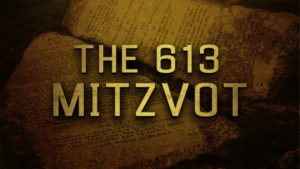 Nu, Rashi was seemingly bothered by the usage of this word (“Garti”), translated above as ‘sojourned’, and, in typical Rashi style, provided his readers (us) with three possible meanings for this word. We shall focus on the third where Rashi, in brackets, quoting a medrish but not its source, tells us that Yaakov was sending a message to Eisav advising that he, Yaakov, was (despite being married to four demanding women and a very tough father-in-law), able to properly observe the 613 mitzvis found in the heylige Toirah while residing in the family compound. The medrish knew this how? Shoin, so happens that numerically the Hebrew letters of “garti” (gimmel, reish, tuf, yud) have the same value as does the word “taryag” which is an acronym for the 613 commandments found in the heylige Toirah. Shoin: 613 = 613; it’s a perfect match and they must be related. Exactly how Yaakov observed the entire heylige Toirah which specifically forbids one from marrying sisters, while married to not one but two sets of them, ver veyst? This question has vexed many an exegete for generations. In response, many have spun very interesting tales as to how these two concepts are not mutually exclusive. We will of course question them below.
Nu, Rashi was seemingly bothered by the usage of this word (“Garti”), translated above as ‘sojourned’, and, in typical Rashi style, provided his readers (us) with three possible meanings for this word. We shall focus on the third where Rashi, in brackets, quoting a medrish but not its source, tells us that Yaakov was sending a message to Eisav advising that he, Yaakov, was (despite being married to four demanding women and a very tough father-in-law), able to properly observe the 613 mitzvis found in the heylige Toirah while residing in the family compound. The medrish knew this how? Shoin, so happens that numerically the Hebrew letters of “garti” (gimmel, reish, tuf, yud) have the same value as does the word “taryag” which is an acronym for the 613 commandments found in the heylige Toirah. Shoin: 613 = 613; it’s a perfect match and they must be related. Exactly how Yaakov observed the entire heylige Toirah which specifically forbids one from marrying sisters, while married to not one but two sets of them, ver veyst? This question has vexed many an exegete for generations. In response, many have spun very interesting tales as to how these two concepts are not mutually exclusive. We will of course question them below.
A personal favorite pshat on how Yaakov was permitted to marry sisters goes like this. Says the Levush Ha’orah and the Maharsha (Yoma 28B), azoy: it’s all quite poshit. The girls, were originally part of the B’nai Noiach, in other words, shiksas, ober they converted to become Hebrew. And? Nu, along comes the heylige Gemora (Yivomis 48B) and tells us that “a proselyte who converts is considered like a newborn child.” Shoin, and while it’s emes that they could have been considered newborns just based on their age, because they converted, they were no longer related to their birth mother or to each other. Shoin, Yaakov was suddenly free to move about the cabin and marry two that were formerly of a kind. Gishmak!
Growing up, the Oisvorfer was always inspired by Yaakov Oveenu and not only because he was either 63 or 77 when he married his love interest, a beauty, by the name of Rochel who was either 3, 5, 21, or 22, plus three other wives, but also because his own father’s name was Yaakov. Yaakov was able to observe all 613 mitzvis? OMG! Ober, let’s get real: how is that at all possible? Was the Toirah already given during this time in history? Not! In fact, it was still a few hundred years away from being delivered. Moreover, was Yaakov even Jewish? Not according to everyone and says the RambaN that taka efsher he wasn’t. He wasn’t? What the hec was he? And if he wasn’t, was his father Yitzchok? And what about his zeyda Avrohom? Were our heylige Ovis all not Jewish, say it’s not so?
 And if they weren’t Jewish, what were they and why the hec were they observing the entire list of mitzvis? How could Yaakov observe the entire heylige Toirah with its 613 commandments if he wasn’t, and why would Rashi suggest that he did and therefore was? Was Yaakov and our other Ovis efsher all B’nai Noiach? And if they were, how could they observe all 613 mitzvis when they are commanded to observe but seven? Wouldn’t the observance of 613 be mamish overkill and also efsher even forbidden? May a goy observe shabbis? I don’t think so! Yikes: so many questions. But wait: there’s more. Let’s say he was Jewish, still, how could he observe all 613 mitzvahs when the heylige Toirah does not tell us what they are? In fact, it wasn’t until the heylige Gemora was codified less than 2000 years back that these mitzvis were properly identified. Moreover, not all agree as to which mitzvis are and aren’t to be included on that list, and there are at least three different opinions (RambaM, RambaN and the SeMaG) as to which are, and not in the master mitzvah count. Even in our times, a few are making a living hawking books which claim to contain the real set of mitzvis. Ober, one thing is zicher: those lists were not around in the days of our forefathers.
And if they weren’t Jewish, what were they and why the hec were they observing the entire list of mitzvis? How could Yaakov observe the entire heylige Toirah with its 613 commandments if he wasn’t, and why would Rashi suggest that he did and therefore was? Was Yaakov and our other Ovis efsher all B’nai Noiach? And if they were, how could they observe all 613 mitzvis when they are commanded to observe but seven? Wouldn’t the observance of 613 be mamish overkill and also efsher even forbidden? May a goy observe shabbis? I don’t think so! Yikes: so many questions. But wait: there’s more. Let’s say he was Jewish, still, how could he observe all 613 mitzvahs when the heylige Toirah does not tell us what they are? In fact, it wasn’t until the heylige Gemora was codified less than 2000 years back that these mitzvis were properly identified. Moreover, not all agree as to which mitzvis are and aren’t to be included on that list, and there are at least three different opinions (RambaM, RambaN and the SeMaG) as to which are, and not in the master mitzvah count. Even in our times, a few are making a living hawking books which claim to contain the real set of mitzvis. Ober, one thing is zicher: those lists were not around in the days of our forefathers.
Nu, many of you might find this shocking, ober says no lesser a Toirah giant than the RambaM (Maimonides) azoy: the Ovis (forefathers), all of them, were mamish B’nai Noiach. Well, blow me down. And let’s not forget that our good rabbis taught us that our heylige Ovis, each added a prayer service. Avrohom instituted Shachris (morning prayers), Yitzchok went into the field and gave us Mincha (afternoon service) and Yaakov, added the Maariv (evening service). Yaakov, in this week’s parsha, also added the negative mitzvah of the “Gid Hanoshe” (it is forbidden to eat the sciatic nerve). Nu, if it’s taka emes that they each observed the entire heylige Toirah though it was of course not yet revealed to the Yiddin (of course there were no Yiddin), how could they have added the prayer services if they were already part of Toirah she’baal’peh (The oral Tradition)? Shoin. We don’t know with certainty whether or not our forefathers were Yiddin or stam azoy B’nai Noiach who took additional mitzvis upon themselves as a result of their enlightenment or through ‘ruach hakoidesh’ (Divinely inspired). The bottom line: they were selected to be our forefathers, and you were not! And if Rashi saw fit, though in brackets, to quote a medrish telling us that Yaakov, while sojourning with Lovon for several decades, was able to maintain his deep belief in the RBSO and His ways, so be it.
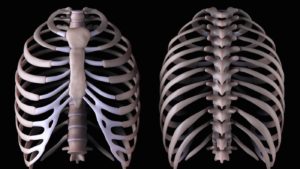 Shoin, let’s touch on one more related topic before we get into the parsha and look in on Dina, the only girl in the Yaakov household. Whether or not Yaakov knew, or perhaps chapped in one of his dreams, the 613 mitzvis, one thing is quite and abundantly clear: in our times, we no longer have 613 mitzvis. We don’t? What happened to them? Let’s review. Says the heylige Gemora (Makkis 23b) azoy: the RBSO taught Moishe 613 mitzvis. Of those, 365 were of the negative variety (thou shall not do) and 248 positive commandments. As an aside, the 365 no-no’s correspond to the number of days in a solar year and the 248 positive mitzvis correspond to the number of ribs found in every human being.
Shoin, let’s touch on one more related topic before we get into the parsha and look in on Dina, the only girl in the Yaakov household. Whether or not Yaakov knew, or perhaps chapped in one of his dreams, the 613 mitzvis, one thing is quite and abundantly clear: in our times, we no longer have 613 mitzvis. We don’t? What happened to them? Let’s review. Says the heylige Gemora (Makkis 23b) azoy: the RBSO taught Moishe 613 mitzvis. Of those, 365 were of the negative variety (thou shall not do) and 248 positive commandments. As an aside, the 365 no-no’s correspond to the number of days in a solar year and the 248 positive mitzvis correspond to the number of ribs found in every human being.
Moreover, aren’t certain mitzvis person specific and incumbent only upon those certain people? And aren’t there a bunch of others that are location specific? That would be correct. Limoshol, there are innumerable mitzvis incumbent only upon the koihanim. And let’s not forget the bunches that are active only inside the borders of the Promised Land. That being the case, how could Yaakov taka observe all 613 mitzvis? The answer is that he did not! Let’s get over it.
And how many do we have today? Are the negative commandments still intact? Or, are we free to roam about the cabin, if you chap? May we, in our times marry the girl of our dreams and her hot sister? And efsher the mother too if hot? Not! Nu, the answer contains good and bad news. The good news: of the 248 positive commandments, fewer than 126 remain operative in our times. More good news: that number too is not real as it contains mitzvis which depend on circumstances. Should we encounter the circumstance, we must perform the mitzvah. Absent of the encounter, there is no obligation. In general, searching for an encounter, if you chap, leads to a violation of a negative commandment. The bottom line: there are approximately 50 left that are required of us. As to the ‘thou shall not do list,’ of the original 365, only 243 remain active today while the Yiddin are in golus (Diaspora). Others say this number is down to 222. The really bad news: though the numbers are quite manageable, sadly, many of us cannot control our base instincts, if you chap, and continue to violate the same ones, over and again. Yikes.
As stated above, Vayishlach features: war games, kidnapping, rape, murder and efsher a shtikel incest, oy vey. What it doesn’t feature is nachas from the kinder, nebech. This week the Oisvorfer will take a closer look at Dina, Yaakov’s only daughter. Maybe, space permitting, we’ll peak in on Reuven who had a shtikel bed incident with his step-mother, rachmono litzlon. Also, Rochel will die this week as will Yitzchok, may they all rest in peace. Devora dies as well and some say that Rivka too passed away. Rochel will be buried along the way; exactly where that place is- ver veyst (who knows) and is zicher subject to a machloikes (argument) that’s raging till today. Yitzchok will of course be buried in Chevron without controversy by both Yaakov and Eisav. Don’t know that we’ll get to cover every topic but hey, the Oisvorfer will be back next year.
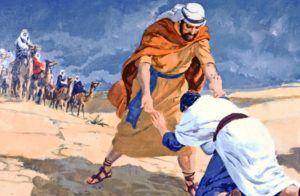 As Vayishlach opens, Yaakov is now 97 years old, and it’s time to make peace with his eltere brider (older brother) Eisav. The actual encounter, 34 years later, is far less dramatic than the buildup, isn’t it always, if you chap, and after preparations comprised of a three pronged strategy, including a military option, it’s all over with one big hug and kiss. Shoin: they make up, split up and live happily ever after.
As Vayishlach opens, Yaakov is now 97 years old, and it’s time to make peace with his eltere brider (older brother) Eisav. The actual encounter, 34 years later, is far less dramatic than the buildup, isn’t it always, if you chap, and after preparations comprised of a three pronged strategy, including a military option, it’s all over with one big hug and kiss. Shoin: they make up, split up and live happily ever after.
In mitten direnen (in the middle) of this entire reunion between the brothers, we are taught that Yaakov gets entangled in some mysterious wrestling match with an unnamed foe, an “ish” who suddenly appears out of nowhere. From this text, it’s clear that the ish is not a human being, but an angel, Eisav’s. What that means I never really chapped but le’acher hamayseh (when the story is over), Yaakov’s name is changed to Yisroel, making him the second of our four forefathers to undergo a name change. And since Yaakov was the father of the holy shvotim (the 12 tribes), we are forever known as the B’nai Yisroel. Veyter. Now just before the grand reunion, we read (B’reishis 32:23) as follows: “And [Yaakov] arose during that night, and he took his two wives, his two maidservants and his eleven children, and he crossed the ford of the Yabbok.” The heylige Toirah mentions his two wives, his two maidservants and his eleven sons (Binyomin not born yet) – but there is no mention at all, of his daughter Dina! What happened to her? Was she left behind, or was she so unimportant that she was ignored in the Toirah. We’re about to find out.
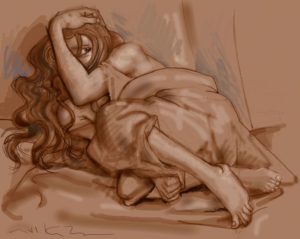 The action picks up and fast as we get to Chamishi (fifth reading), where we read and re-read the story of Dina, Yaakov’s only daughter. So who is this Dina? Where did she come from and whose daughter is she really? Is there even a question? Didn’t we learn just last week that Leah gave birth to Dina? Yes, we did! Is there, chas v’sholom (heaven forbid), epes a shtikel controversy regarding her Yichus (pedigree)? Nu, believe it or not, the medrish couldn’t leave well enough alone and though the heylige Toirah tells us who she is and that Leah was her mother, there is avada room for other interpretations. There is? Is should seem logical enough and require no further discussion. Yes? Seemingly not!
The action picks up and fast as we get to Chamishi (fifth reading), where we read and re-read the story of Dina, Yaakov’s only daughter. So who is this Dina? Where did she come from and whose daughter is she really? Is there even a question? Didn’t we learn just last week that Leah gave birth to Dina? Yes, we did! Is there, chas v’sholom (heaven forbid), epes a shtikel controversy regarding her Yichus (pedigree)? Nu, believe it or not, the medrish couldn’t leave well enough alone and though the heylige Toirah tells us who she is and that Leah was her mother, there is avada room for other interpretations. There is? Is should seem logical enough and require no further discussion. Yes? Seemingly not!
Says the Targum Yoinoson ben Uziel and others quoting the medrish that originally Dina was conceived in Rochel’s womb, but that the RBSO transferred her (fetus), after conception, to Leah’s, so that Rochel could give birth to Yoisef instead. And how do you like that? Way before modern day scientists came up with various fertilization methods including in-vitro, surrogacy and other gishmake methodologies, the RBSO was, as one would expect, trailblazing innovative paths to child bearing. Ober chap nisht (not so fast)…because another Chazal tells us a different story regarding Dina. Nu, let’s hear this. Leah was impregnated by Yaakov who seems to be the only male in the picture, with a male fetus. A nais (miracle) occurred inside the fetus and the male fetus inside of Leah turned into the female Dina. A Houdini act mamish. Avada you heard of males acting like females and even farkert and avada we’ve heard or even see males surgically becoming females and farkert but only the RBSO could accomplish this in utero. Givaldig mamish! Was Dina then the first transgender? Confused she also has been as we will read below about her personality change. There is also an opinion, whose source the Oisvorfer cannot put his fingers on as this review is being written, that Rochel and Leah were pregnant at the same time with, respectively, Yoisef and Dinah, ober, as a result of Leah’s davening (Berachos 60a), the fetuses were miraculously switched. Nu, you can’t make this up. Or, can you?
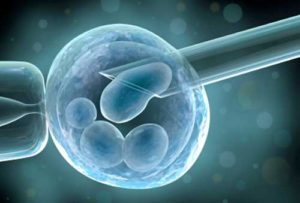 Says the Alshich on that same Gemora that Leah was pregnant with what was supposed to be a male. Yet since that baby was to be the eleventh born to Yaakov Oveenu, even if Rochel were to be blessed with finally having a child (to be number twelve), both Bilah and Zilpa, the Shfachos (Yaakov’s two additional wives) would have more of the Shevatim (tribes) than Rochel. Leah therefore davened to the RBSO for her sister Rochel. The RBSO responded and turned Leah’s unborn male child into Dina. It is therefore no wonder, concludes the Alshich, that Dina was an outgoing person, a personality trait which seemingly will get her into some trouble as we will learn mamish in a minute or two. What’s pshat? Is outgoing so girferlich? Since her roots were of male origin, she possessed this male characteristic to be one who “goes out.” Going out too often can and does seemingly at times lead to others going in, if you chap. Can’t make this up but want more?
Says the Alshich on that same Gemora that Leah was pregnant with what was supposed to be a male. Yet since that baby was to be the eleventh born to Yaakov Oveenu, even if Rochel were to be blessed with finally having a child (to be number twelve), both Bilah and Zilpa, the Shfachos (Yaakov’s two additional wives) would have more of the Shevatim (tribes) than Rochel. Leah therefore davened to the RBSO for her sister Rochel. The RBSO responded and turned Leah’s unborn male child into Dina. It is therefore no wonder, concludes the Alshich, that Dina was an outgoing person, a personality trait which seemingly will get her into some trouble as we will learn mamish in a minute or two. What’s pshat? Is outgoing so girferlich? Since her roots were of male origin, she possessed this male characteristic to be one who “goes out.” Going out too often can and does seemingly at times lead to others going in, if you chap. Can’t make this up but want more?
Says the Ibn Ezra (Bereishis 30:21) that Dina was Zevulin’s twin sister. Are you confused? Nu, you’re not alone. Says the Chida that Targum Yoinoson got it right: the babies switched wombs but clarifies his point on Leah’s tendency to be more outgoing by stating that Dina’s personality in her original womb was more girlish; shy and introverted. Ober, once she entered the womb of Leah, who had Yoisef’s fetus cooking inside, she obtained male tendencies and as a result, ended up with the outgoing personality traits which led to the next part of this week’s Toirah. Well, blow me down! Only one thing is certain: Yaakov was the Tata. As to the mama, ver veyst? Another thing we know with certainty: this Dina was a shtikel tzatzkela and got herself into one heap of a mess. What happened to Dina? Nu, let’s learn some more.
Says Rashi (32:23), quoting the medrish, that one of the precautionary measures Yaakov took in advance of meeting up with Eisav, was to hide his tuchter (daughter) Dina in a box. What’s pshat? Seemingly, he was afraid that were Eisav to lay his eyes on her, he would also want to lay his hands and more on Dina. Perhaps he wanted to get into the box, if you chap. Not that box, you chazerim! More on Dina and the box, just below. Perhaps Eisav would be desirous of marrying Dina. What to do? Yaakov put her into a box where she remained hidden from her uncle. And says the medrish that Yaakov, as a result of not allowing Eisav to see her and possibly also marry Dina, was punished and Dina was taken, from every direction, if you chap, which seemingly Sh’chem did. Again this is not the Oisvorfer’s own pshat, rather a quote from Rashi (verbatim, as you will soon see) and others who had better and clearer imaginations.
What’s pshat? Was Yaakov not doing the right thing? Was he being a shlechte tata (bad father) in not allowing his daughter to be taken by his arch enemy of a brother who wanted to kill him? Ober says the medrish that Yaakov went too far. What’s pshat? Efsher you’re wondering why a loving father would be chastised and punished for protecting his daughter from an evil villain? Says the Medrish: “shemah tachzireno le’mutav – maybe she (Dina) could have turned his (Eisav’s) life around, making him a better person.”
Says the medrish azoy: not only did Yaakov hide her in the box, but he also locked it. In other words: Yaakov was lacking in sensitivity. It’s one thing to put your daughter in a box; according to this pshat, that would have been cool, ober putting on a lock, that was over the top to protect the bottom, if you chap. Though he was a good father and it was efsher taka his obligation to prevent Dina from marrying Eisav, and any parent might have done the same for their child, he is still being called out. The locked box showed that he didn’t feel badly, that he had efsher no desire to help his twin (older) brother do tshuva (become a penitent) by marrying Dina. In other words: Yaakov is being called out. Perhaps he should have made Dina available to Eisav, the thinking and logic being that perhaps she would have set him straight. If this is pshat and why shouldn’t it taka be, efsher this needs to revisited when less than stellar boys show up to date girls in our times. Perhaps we need to rely on our daughters to set them straight. Grada, the idea that a good and strong woman can have a positive influence on a man’s behavior, is a running theme throughout Tanach, the Mishneh, and the heylige Gemora. And avada everyone recalls how a good woman known only as Mrs. Oin ben Peles intervened to save her husband’s life. Nu, efsher Yaakov taka missed a golden opportunity. Ober, what taka did happen to Dina? Lommer chazerin (let’s review) what the heylige Toirah tells us.
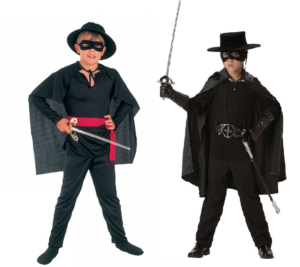 She saunters about to check out the local scene. Specifically what that means we are not told. Was she out to a singles event? A fund raiser for a local charity? Ver veyst? Remember that we learned just above, that Dina was outgoing. Sh’chem laid his eyes (and himself) on her and when done, also abducted her, such a mentch. Veyter. Following the rape, Sh’chem falls in love with Dina and wants her permanently, as a wife. His father, Chamor, proposes an alliance with Yaakov’s mishpocho (family), mistama for the purpose of intermarriage and fusing of their cultures. Veyter! Yaakov heard what took place, the brothers heard and in one of the most famous Toirah stories ever told, Shimon and Levi concocted a plan, executed it to perfection, took out their swords and slaughtered all the males in the city. Oh and before they killed all the males, including of course Sh’chem and his dad, three days earlier, the entire male population was tipped off, literally in a mass bris. Yaakov was not overly pleased with their behavior though at least one medrish tells us that the reason he was upset was because he wasn’t consulted in advance. The brothers remain indignant and claim they did the right thing. According to Chazal, Shimon and Levi were 13 years old; efsher they got swords as bar mitzvah presents.
She saunters about to check out the local scene. Specifically what that means we are not told. Was she out to a singles event? A fund raiser for a local charity? Ver veyst? Remember that we learned just above, that Dina was outgoing. Sh’chem laid his eyes (and himself) on her and when done, also abducted her, such a mentch. Veyter. Following the rape, Sh’chem falls in love with Dina and wants her permanently, as a wife. His father, Chamor, proposes an alliance with Yaakov’s mishpocho (family), mistama for the purpose of intermarriage and fusing of their cultures. Veyter! Yaakov heard what took place, the brothers heard and in one of the most famous Toirah stories ever told, Shimon and Levi concocted a plan, executed it to perfection, took out their swords and slaughtered all the males in the city. Oh and before they killed all the males, including of course Sh’chem and his dad, three days earlier, the entire male population was tipped off, literally in a mass bris. Yaakov was not overly pleased with their behavior though at least one medrish tells us that the reason he was upset was because he wasn’t consulted in advance. The brothers remain indignant and claim they did the right thing. According to Chazal, Shimon and Levi were 13 years old; efsher they got swords as bar mitzvah presents.
Now read carefully to the last three words of possuk beis just below (that’s possik 2 you idiots). The text states “Vayishkav” …..’and he took her, lay with her….’ We will zicher come back to that word shortly. Rashi (in the shaded box) understands that the minuvil Sh’chem took Dina and had his way with her. First kidarko (in a natural way), then epes he flipped her over and Vayi-ah-neh-huh (he violated her in an unnatural way). Nu, what can be said about the mamish heinous crime committed against Yaakov’s only daughter? Ober, why Rashi felt the need to provide these dark details and this visual, ver veyst? Nu, efsher we can kler that Rashi was thinking azoy: how, in future generations, will I get people motivated to learn the heylige Toirah? How will I compete with the Internet and other social media outlets? How do I keep the Yiddin of future generations interested in the heylige Toirah to feel empathy for Dina? How? By shocking us with lurid rape and torture details of what Shechem that chazir did to our beloved Dina. Rashi, as the Oisvorfer has told you many times, was a genius. His plan worked. And here you are generations later, reading and reviewing every word. Shoin, let’s then read the Rashi innaveynig (let’s read his specific words) on what went down:
| 2. And Shechem the son of Chamor, the Hivvite, the prince of the land, saw her, and he took her, lay with her, and violated her. | ב. וַיַּרְא אֹתָהּ שְׁכֶם בֶּן חֲמוֹר הַחִוִּי נְשִׂיא הָאָרֶץ וַיִּקַּח אֹתָהּ וַיִּשְׁכַּב אֹתָהּ וַיְעַנֶּהָ: | |
| lay with her: in a natural way. — [from Bereishis Rabbah 80:5] | וישכב אתה: כדרכה: | |
| and violated her: Heb. וַיְעַנֶהָ, lit., and afflicted her. [I.e. he was intimate with her] in an unnatural way. — [from Bereishis Rabbah 80: 5] | ויענה: שלא כדרכה: | |
| 3. And his soul cleaved to Dinah the daughter of Yaakov; he loved the girl and spoke to the girl’s heart. | ג. וַתִּדְבַּק נַפְשׁוֹ בְּדִינָה בַּת יַעֲקֹב וַיֶּאֱהַב אֶת הַנַּעֲרָ וַיְדַבֵּר עַל לֵב הַנַּעֲרָ: | |
| and spoke to the girl’s heart: [I.e. he spoke] seductive words,“Look how much money your father squandered for a small parcel of land. I will marry you, and you will acquire the city and all its fields.” – [from Bereishis Rabbah 80:7] | על לב הנערה: דברים המתיישבין על הלב, ראי אביך בחלקת שדה קטנה כמה ממון בזבז, אני אשיאך ותקנה העיר וכל שדותיה: | |
But wait: Does everyone agree that Dina was raped and tortured? Not? Why not? Because of what happened next. Instead of walking, or running away, Shechem the minuvil chazir fell in love with Dina and wanted to marry her. You hear this raboyseyee? Grada his request for marriage led the Ibn Ezra and the Radak to assume that Dina was but deflowered by Shechem ober not raped. Such a mentch! And says the Ba’al Haturim, yet another expert in these matters, that Dina was but seduced. Ober the RambaN holds that she was raped mamish. How either of them would know, unless they were in the room -efsher under the bed as was Rochel in last week’s parsha- ver veyst? And listen to this: Many blame Dina for her predicament, if you chap, stating that she brought her plight onto herself by having her arm exposed. Shoin, once the arm was exposed, Shechem took notice, was enticed, and wanted the rest of her.
And how old was Dina when this incident took place? A simple calculation suggests she was a ripe seven year old. Nu, at least she wasn’t three. Halt kup. Would Sh’chem really have gone for a seven-year old? Was he a minuvil and a pedophile, ver veyst? A great guy, seemingly he wasn’t! Would Yaakov and or his eishes chayil Leah, or any of the other wives, really have considered Shechem, following the rape of Dina, a suitable shidduch for her? Only an idiot would rape a girl and then ask for her hand in marriage. On the other hand, why not? Didn’t we just learn that Rivka was three and Rochel either three of five; seven seems almost elderly and lucky for her, someone wanted her.
The bottom line is azoy: the Dina rape/seduction, deflowering myseh (you pick) as recorded in the heylige Toirah, left room for plenty of speculation, the lacuna was big, it needed to be filled. Shoin, to plug the holes, our rabbis imagined what befell Dina, ober for sure didn’t know with certainty. Grada, the key word of Vayishkav (and he slept with) used by the heylige Toirah to suggest that Shechem slept with Dina, was used just last week when describing what took place between Reuvain and his step-mother Bilah. Ober in that parsha, our rabbis in the heylige Gemora argue vociferously that the text does not at all mean that Reuvain bedded his step-mother. Did he? Did Shechem rape Dina? Or, was Dina a willing participant? Ver veyst?
Her fate is the subject of much rabbinical speculation, let’s examine a few. Many say that Dina became pregnant and had a child through Sh’chem, pig that he was. But what about the heylige Gemora which tells us that a seven year old cannot become pregnant? What about it? Who says that one medrish which tells us she was but seven needs to jive with another which tells us that she was impregnated by Shechem? It’s medrish: they are all good. Perhaps not all emes, but all good. Pirkei de-Rabbi Eliezer states that Dina had a baby girl, Osnas, about whom you’ll be hearing next week, who was the daughter of this union. Yaakov’s sons wanted to kill the baby, so it would not be said that there was harlotry in his tents. The RBSO sent a malach (angel) to bring her to the house of Potiphar in Mitzrayim. The Mechilta (not to be confused with the gifilte) de-Rebbe Yishmoel says that the brothers were forced to drag Dina out, because she was too ashamed to leave Sh’chem’s house. The Yalkut says that once she had tasted intercourse with this uncircumcised goy, she was happy (not the typical reaction), and didn’t want to leave. The Oisvorfer quotes him verbatim as well. Finally, Shimon vowed that he would marry her. They wed, and a son was born from this union. His name: “Saul the son of a Canaanite woman.” The rescue was carried out by Shimon and Levi together. As to why Shimon ended up with Dina as opposed to Levi, this we do not know but Shimon is the presumed father. Efsher because he was older? Or maybe, this is a way to save Shimon from the perceived error of marrying a shiksa Canaanite. Later in Shmois (6:15), we’re introduced to Shaul, the son of Shimon and “a Canaanite woman.” Yaakov’s kids couldn’t find nice Jewish girls to marry? Was there a shidduch crisis brewing way back then? Nu, where was I? The medrish says this woman is actually Dina, and Shaul is the son she had with Sh’chem. Which was it? A boy or a girl? Or was it the girl Osnas with Sh’chem and the boy Shaul with her brother? Both? Shoin, settled!
A different medrish relates that Dinah married Iyov (Job), another goy. According to one opinion in the heylige Gemora (Buba Basra 15b), Iyov lived in the time of Yaakov Oveenu and he married Dina.
The good news: Though Yaakov’s family was somewhat dysfunctional and though one son may or may not have married his own sister and though many others had issues as we will learn in the coming weeks, they are still referred to as the Shivtay Ko, the holy tribes. There’s still hope for some of you.
A gittin Shabbis-
The Oisvorfer
Yitz Grossman
Source URL: https://oisvorfer.com/vayishlach-2016-dina-the-first-transgender/